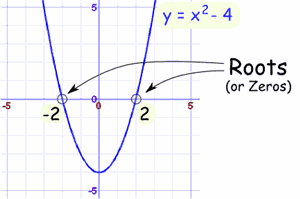Zeroes of a Function
Whenever a function hits the x-axis, that point is known as a zero. Haha, how can a number greater than zero be a zero.
When the function is set to be an equation, it is always set to zero. For example, x+4=0
Always isolate the x variable as it is where the point of which it meets the x-axis.
It can be also called roots, since the x-axis is horizontal and respects the ground floor.
When you solve for a zero, it would be basic algebra. So if you haven't taken Algebra 1, you can be in big trouble because many functions are required to be solve using this method.
Pun of the Week:
Some mathematicians are reluctant to cosine a loan.










